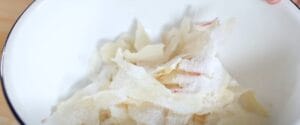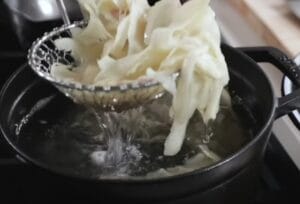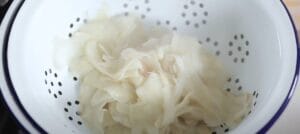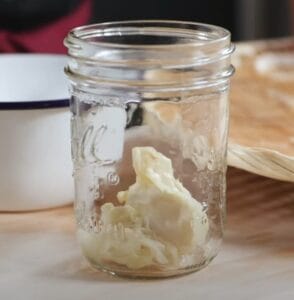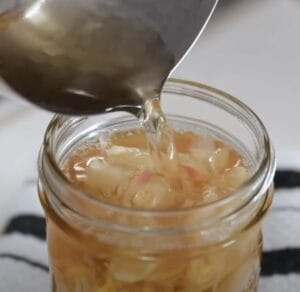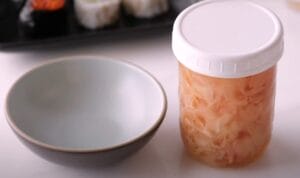Create the ultimate sushi condiment—learn how to make pickled ginger for Sushi that’s both refreshing and flavorful.
This thinly sliced, sweet and tangy ginger is meant to cleanse the palate between different types of sushi. It balances and enhances the flavors in such a sublime way. I simply had to try my hand at making some! With summer approaching, I lucked out finding fresh young ginger at my local farmer’s market. I gathered my ingredients and set to work, feeling excited to pickle my own gari for the first time.
The process was surprisingly straightforward. After slicing the ginger thin and sprinkling with salt to draw out moisture, I combined rice vinegar, sugar and salt for the pickling liquid. I poured this over the ginger slices and let them pickle for a few days. The result was better than I could’ve imagined – beautifully pink, pleasantly crunchy and not too sweet.
I can’t wait to serve homemade gari alongside my latest sushi experiments. As both a barbecue pitmaster and blossoming sushi enthusiast, experimenting with new flavors brings me great joy. I hope this easy pickled ginger recipe will inspire my fellow food lovers to expand their culinary horizons as well!
How to make pickled ginger for sushi
The humble Sushi Ginger is a delicious accompaniment to any sushi roll. It is made from thinly sliced slices of ginger. The sweet marinated ginger is best. Younger ginger is preferred because of its natural sweetness and tender flesh. The traditional ginger used for gari is a Japanese variety. The Japanese serve the dish after the sushi has been eaten. Here are some ways to enjoy sushi ginger. Read on to learn more! This simple side dish is a classic in Japan.
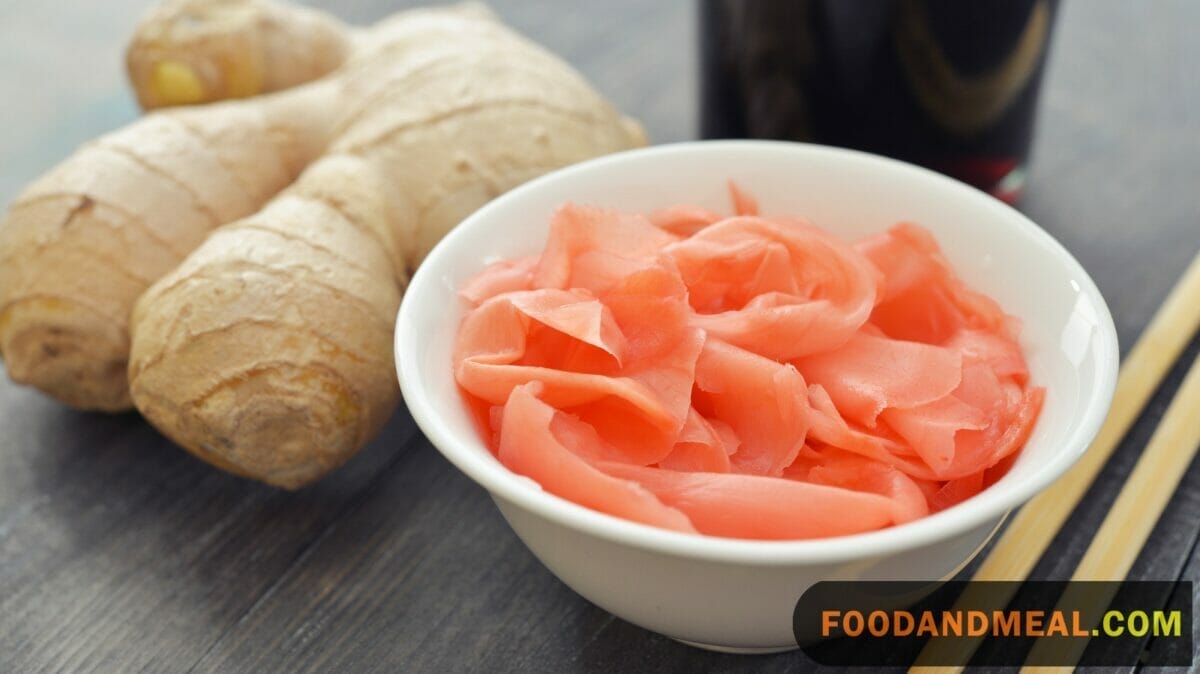
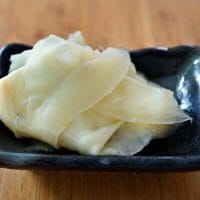
Sushi Ginger
Equipment
Ingredients
- 1 cup ginger root fresh, peeled and sliced thinly, preferably young ginger
- 1 ½ teaspoons sea salt
- 1 cup rice vinegar
- ⅓ cup white sugar
Instructions
- Coat the ginger slices well with salt and let stand for 30 minutes.

- ( additional ) Bring a medium pot of water to a boil. Once boiling, blanch the thinly sliced ginger for 1–2 minutes. If you want to keep it spicy, take it out after 1½ minutes. Tip: If you are using regular ginger (not young ginger), blanch it for 2–3 minutes to remove the extra spiciness.

- ( additional ) Drain the ginger slices in a sieve. Let them cool slightly so you can handle them with your hands.

- ( additional ) With your clean hands, spread out the slices in a single layer over a large Japanese bamboo sieve or paper towel/wire rack. Set aside until it‘s completely cooled and dried out a bit more.

- Squeeze out any liquid and place the slices in a glass jar.

- In a saucepan, stir sugar in vinegar until it is dissolved. Bring it to a boil and immediately pour it into the jar with sliced ginger.

- Let it cool and place a lid on jar. It keeps for a week, refrigerated.

- Serve with sushi.

Video
Notes
Nutrition
© Food And Meal
This website provides approximate nutrition information for convenience and as a courtesy only. Nutrition data is gathered primarily from the Spoonacular Database, whenever available, or otherwise other online calculators.
Making Sushi Ginger in a Food Dehydrator
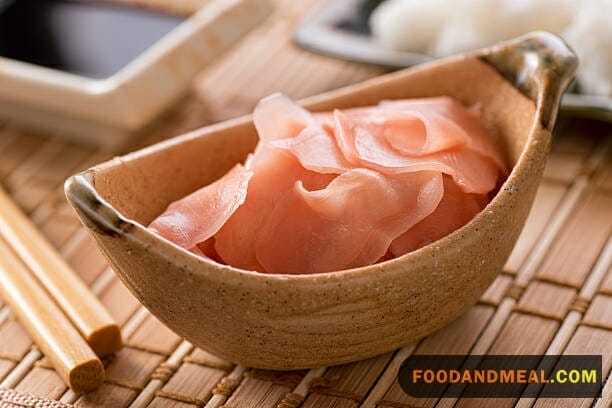
Emotionally, there may be a feeling of anticipation as one waits for the ginger to dry out in the dehydrator. Watching the transformation from fresh, plump slices to drier, more concentrated pieces can be fascinating. It’s a process that requires patience, as dehydrating food is not instantaneous, but the prospect of creating a unique version of sushi ginger can be very rewarding.
From a personal standpoint, using a food dehydrator for making sushi ginger might evoke a sense of pride in utilizing modern technology to enhance traditional food preparation methods. It’s a blend of old and new, where one respects the origins of the dish while embracing innovation.
However, it’s important to approach this method with some caution. The dehydrating step must be carefully monitored to ensure that the pickled ginger gari does not become too tough or lose too much moisture, which could affect its ability to pickle properly. The balance between drying and pickling needs to be just right to achieve the desired outcome.
What is pickled ginger good for ?
Pickled ginger gari, often accompanying sushi, is not just a palate cleanser but also harbors various potential health benefits. Its primary component, ginger, has been revered for centuries for its medicinal properties.
The process of pickling can alter the flavor profile of ginger, often making it less pungent and more approachable, with a hint of sweetness accompanied by a tangy zest. This combination can be quite pleasant and refreshing, especially when paired with the right foods. Emotionally, the taste of pickled ginger can evoke a sense of invigoration due to its sharp flavor, and many people find it to be a delightful contrast to the savory notes of sushi.
From a health perspective, ginger contains bioactive compounds like gingerol, which have anti-inflammatory and antioxidative properties. These could help in soothing gastrointestinal distress and may aid in digestion. Furthermore, ginger has been traditionally used to help alleviate symptoms of nausea and is often recommended for those who suffer from motion sickness.
Moreover, consuming ginger in its pickled form may confer similar benefits to raw ginger, although it’s worth noting that the pickling process might reduce some of the potency of ginger’s active components. Nevertheless, pickled ginger still retains some essential nutrients and can be a good source of vitamin C.
So, does pickled ginger go bad? . Personal opinions on pickled ginger can vary widely. Some individuals appreciate its unique taste and incorporate it into their meals beyond sushi for its digestive benefits, while others may enjoy it purely for the culinary experience it provides. It’s a multifaceted condiment that can elicit joy and satisfaction, particularly for those who are fond of its distinctive flavor and texture.
Remember, while pickled ginger can contribute positively to one’s diet, it should be consumed in moderation, as with all things, to maintain balance and ensure a well-rounded intake of nutrients.
Tips for making Sushi Ginger

Cooking Tips
When learning how to make pickled ginger for sushi, one might feel a sense of connection to the Japanese culinary tradition. It’s an opportunity to appreciate the subtleties of flavor and the importance of balance in food. The gentle heat of the ginger, combined with the sweetness and acidity of the pickling solution, creates a harmonious addition to the bold flavors of sushi.
It’s important to note that while the process is straightforward, attention to detail is key. Ensuring that the ginger is young and fresh will result in a more tender and flavorful gari. The thickness of the slices will also affect the texture, so taking care to slice the pickled ginger gari thinly will yield a more pleasant mouthfeel.
Serving Suggestions
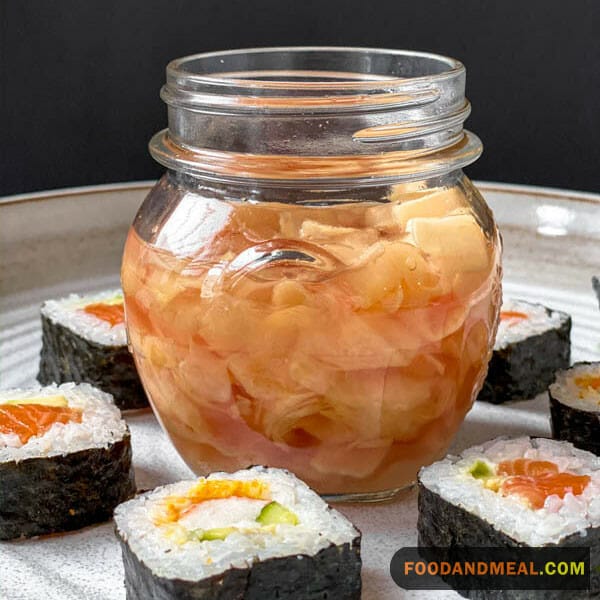
The thinly sliced, sweetened and pickled ginger has a refreshing and palate-cleansing effect, which complements the richness of the fish.
- Nigiri Sushi: Serve thin slices of pickled sushi ginger on the side of nigiri sushi, allowing diners to eat a slice between different pieces to refresh their taste buds.
- Sashimi: Arrange a small mound of sushi ginger on a sashimi platter. Its zesty taste provides a contrast to the delicate flavor of raw fish.
- Maki Rolls: Include pickled ginger alongside maki rolls, such as Spicy Tuna Maki or California Maki Rolls, for a tangy counterpart to these popular sushi options.
- Seafood Ramen: For a unique twist, add a few slices of sushi ginger to a bowl of Seafood Shio Ramen or Seafood Miso Ramen for an unexpected burst of flavor.
- Dragon Roll: Accompany the Dragon Roll with sushi ginger to cut through the eel’s sweetness and the roll’s creamy texture.
- Chirashi: Scatter some slices of sushi ginger over a bowl of assorted sashimi, rice, and vegetables in a Chirashi bowl to enhance the variety of flavors.
In summary, sushi ginger can be served with various forms of sushi and even added to certain Japanese-inspired dishes for a refreshing zest. It’s important to use it sparingly to avoid overpowering the main dish.
Top 9 FAQs about pickled ginger gari
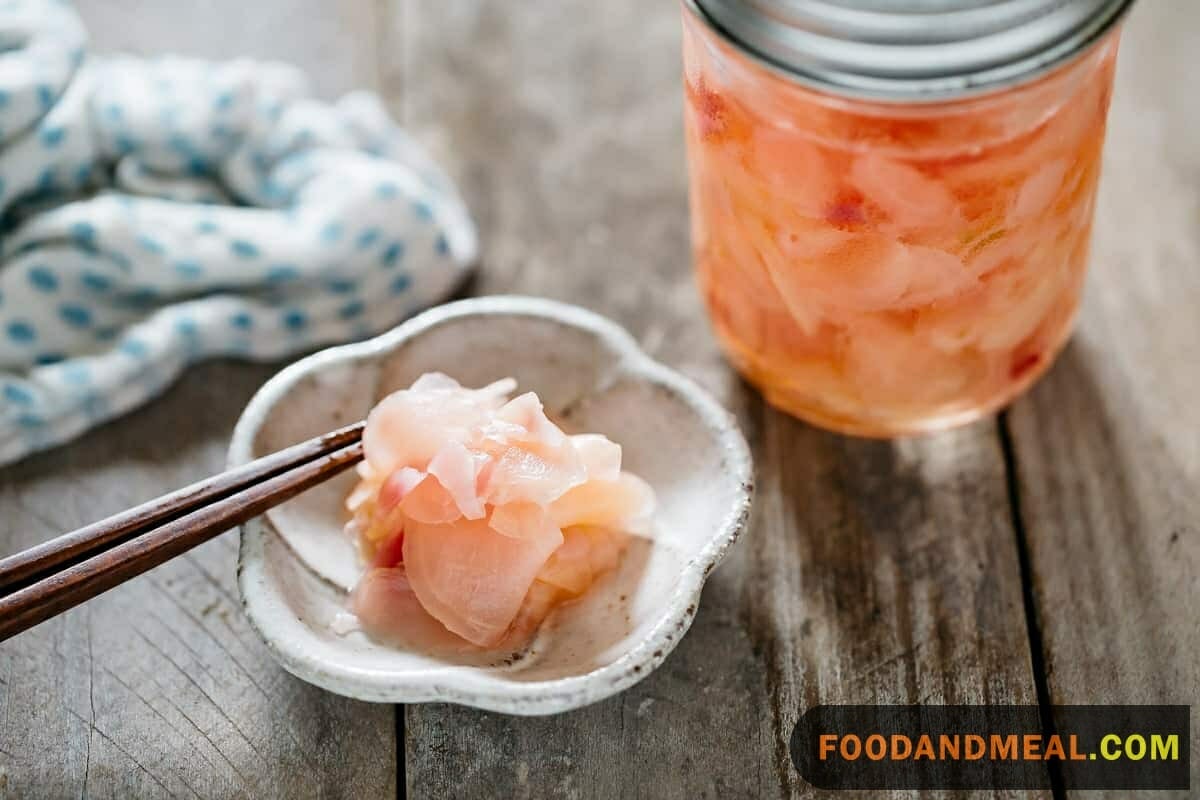
- Is sushi ginger the same as pickled ginger? No, sushi ginger and pickled ginger are often used interchangeably, but sushi ginger is specifically prepared with young ginger, resulting in a milder flavor and a pale pink color. Pickled ginger, on the other hand, can be made from older ginger and has a stronger taste.
- How do you process ginger for sushi? To prepare ginger for sushi, thinly slice young ginger, coat it with salt, and let it stand for 30 minutes. Optionally, blanch the slices for 1-2 minutes to adjust spiciness. Drain, cool, and dry the ginger before pickling it in a sweetened vinegar mixture.
- Is pickled ginger as good as raw ginger? Pickled ginger serves a different purpose than raw ginger. While raw ginger adds a spicy kick, pickled ginger complements sushi with its sweet and tangy flavor. Both have unique qualities, and their goodness depends on personal preference and the desired taste in the dish.
- How long does sushi pickled ginger last? Sushi pickled ginger can last for about a week when stored in the refrigerator. Its freshness and flavor are best within this timeframe.
- Can I store dehydrated Sushi Ginger, and how long will it stay fresh? Yes, you can store dehydrated Sushi Ginger in an airtight container at room temperature for several months. Its unique texture and flavor will remain intact.
- Can I use regular ginger for this recipe? While you can use regular ginger, young ginger is preferred for its milder flavor and less fibrous texture. It’s worth seeking out young ginger for the best results.
- What if my dehydrated Sushi Ginger becomes too brittle? If your ginger becomes too dry and brittle, you can rehydrate it by placing it in a container with a small dish of water. Seal the container and let it sit for a few hours, and your ginger should regain its pliability.
- Can I customize the flavor of dehydrated Sushi Ginger? Absolutely! Feel free to experiment with the pickling brine to achieve your desired balance of sweetness and tanginess. Adjust the ingredients to create a unique flavor profile.
- Are there other creative uses for dehydrated Sushi Ginger? Dehydrated Sushi Ginger is versatile. Use it as a garnish for various dishes, pair it with cocktails, or enjoy it as a snack. Its intensified flavor and chewy texture make it an exciting addition to many culinary creations.
Conclution
Making homemade pickled ginger was easier than I ever imagined. With just a few simple ingredients and some patience during the pickling process, I was rewarded with the most vibrantly hued, perfectly tangy and crunchy gari. It was a joy to see the ginger slices transform over the few days of pickling.
I’m thrilled to have this versatile component on hand to incorporate into all my summer sushi experiments and beyond. The sweet-tart ginger pairs so beautifully with rich, fatty tuna and cuts right through the fattiness. It truly cleanses and resets the palate, allowing full appreciation of the complex flavors in sushi.
I hope my How to make pickled ginger for sushi guideinspires you to try your hand at making gari or expanding your culinary skills in new directions. Start small, have fun with it and see where your taste buds lead you – that’s my motto! Wishing you many delicious adventures in the kitchen and at the table.


